My Town: Simsbury
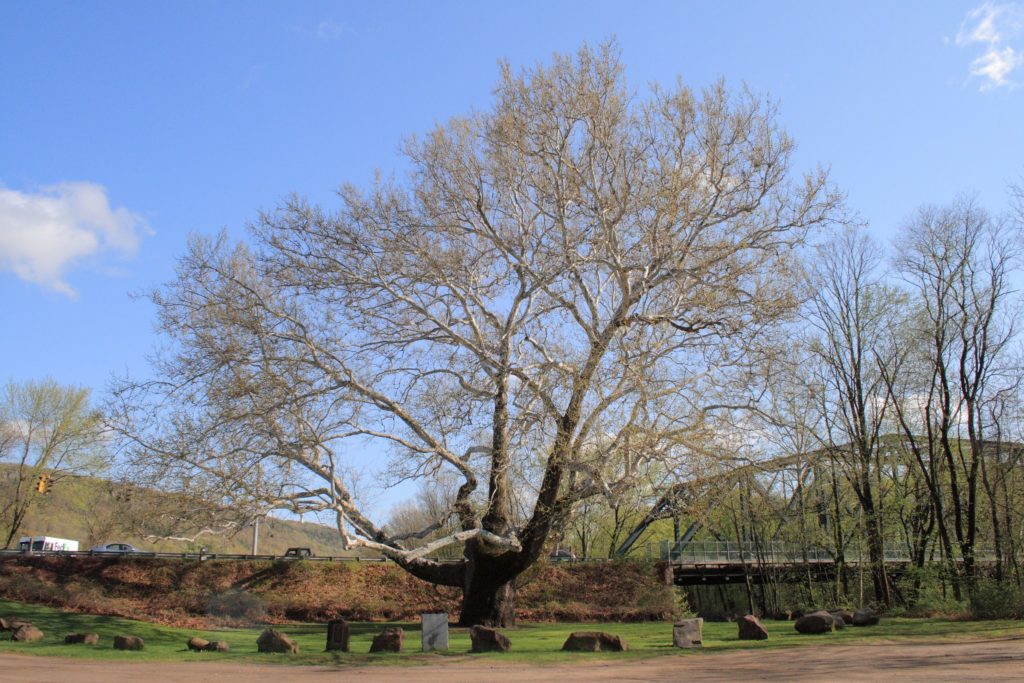
The Pinchot Sycamore, the biggest tree in Connecticut is in Simsbury. photo: Ragesoss, Wikimedia Commons
By Bobby Shipman
Where is my town?
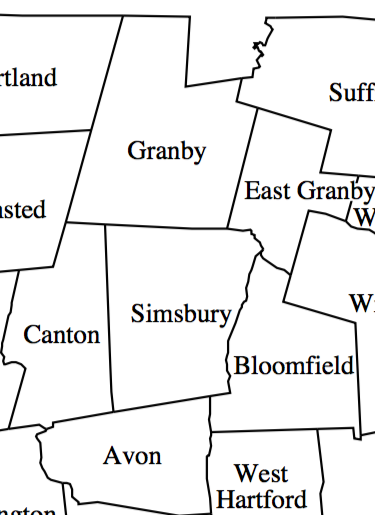 Simsbury is in the north-central part of the state. It is bordered by Granby on the north, Canton on the west, Avon to the south, and East Granby and Bloomfield to the east. Until 1786 Simsbury included Canton, Granby, East Granby, and a part of Bloomfield.
Simsbury is in the north-central part of the state. It is bordered by Granby on the north, Canton on the west, Avon to the south, and East Granby and Bloomfield to the east. Until 1786 Simsbury included Canton, Granby, East Granby, and a part of Bloomfield.
Simsbury has four small villages: Simsbury Center, Weatogue, West Simsbury, and Tariffville. Simsbury has many unique land features. You can find forests, ponds, streams, and rivers. The Farmington River flows through town. You can even find a mountain—Talcott Mountain! It is part of the Metacomet Ridge. The Metacomet Ridge is on the eastern side of town. Talcott Mountain has Simsbury’s highest point: 950 feet above sea level.
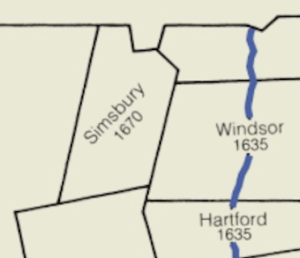 The largest tree in Connecticut grows in Simsbury. It is a Sycamore tree. It grows near the Farmington River.
The largest tree in Connecticut grows in Simsbury. It is a Sycamore tree. It grows near the Farmington River.
Simsbury has a small airport and three state parks: Penwood State Forest, Stratton Brook State Park, and Talcott Mountain State Park. It also has the McLean Game Refuge. (Read about the McLean Game Refuge HERE.)
How was it founded?
The first people living in the area were the Massacoe Indians. They reached the area thousands of years ago. They fished along the Tunxis River (now called the Farmington River). They hunted near Salmon Brook.

The Farmington River. photo: Bobby Shipman
John Griffin and Michael Humphrey were among the first settlers. They came from Windsor in the 1640s. They were looking for pine pitch, tar, and turpentine found in yellow pine trees. Pitch, tar, and turpentine were used in shipbuilding.
Around this time a Massacoe named Manahanoose burned up some of Griffin’s tar. The General Court fined him. He paid the fine by giving land to Griffin.
The settlers found lots of fish and wildlife. They named the area the Massacoh Plantation. In 1670 the name was changed to Simsbury and it became a town.
In the early spring of 1676 though, the town was abandoned! Wampanoag sachem Metacom—also known as King Philip—and his Native allies were trying to drive the English out of New England. This is known as King Philip’s War.
The townspeople were afraid. About 40 families left Simsbury and returned to Windsor for safety. The Massacoe were allies of the English. They moved west to the Housatonic River for safety.
On March 26, the warring tribes came down from the north. They burned the town. When the war was over, the settlers began to return. They rebuilt the town. The General Court now purchased the land from the Massacoe.

Talcott Mountain. Wikimedia
How do its residents make a living?
Simsbury has a lot of history in American manufacturing. It made the first copper coins, steel, and safety fuses in America.
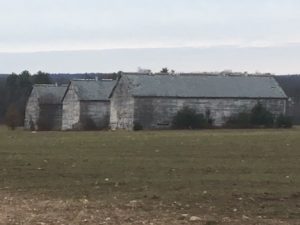
Tobacco barns. photo: Bobby Shipman
One of Simsbury’s main businesses was growing tobacco. Tobacco leaves are used to make cigars and cigarettes. Until the 1980s tobacco farming was big business in Simsbury. In the 1940s a young Martin Luther King Jr. came to work at Simsbury’s tobacco farms! He was a college student from the south. He later become a great Civil Rights leader.
Today Simsbury is home to insurance companies. Chubb Insurance Group is the largest one in town. Chubb has branches worldwide. More than 31,000 people work for Chubb worldwide but only 400 of them work in Simsbury.
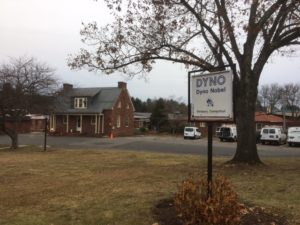
Dyno Nobel. photo: Bobby Shipman
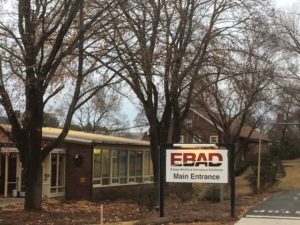
Ensign-Bickford Aerospace & Defense. photo: Bobby Shipman
Another big employer in Simsbury is Ensign-Bickford Industries. It started in 1836 making explosives. Later they began manufacturing parts for rockets and missiles! Dyno Nobel makes explosives using the old formula that Ensign-Bickford sold to them. Along Hopmeadow Street, there are a many small businesses. There are restaurants, shops, and many things to do.
How did it grow?
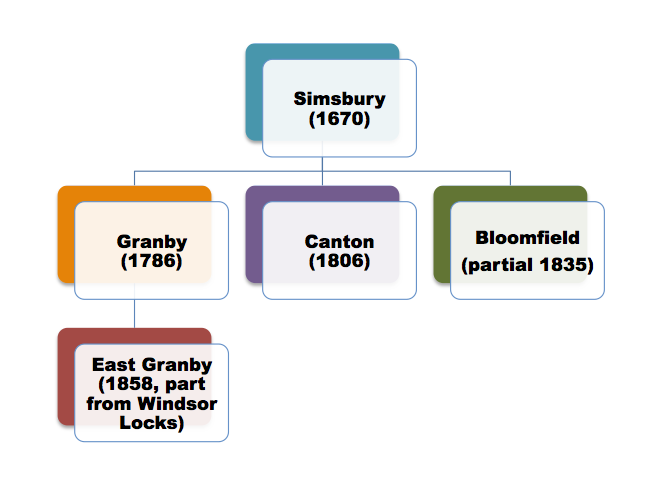 In 1669, there were only 21 residents. But the population grew. The opportunities for hunting, fishing, and agriculture attracted many settlers after King Philip’s War ended.
In 1669, there were only 21 residents. But the population grew. The opportunities for hunting, fishing, and agriculture attracted many settlers after King Philip’s War ended.
The Farmington Canal and then the railroad went through town in the early 1800s. Read more about the Farmington Canal HERE.
Waves of immigrants from Europe to America in the 1800s brought many newcomers to Simsbury. By 1900 just over 2,000 people lived in Simsbury. By 1950 there were 5,000 residents in Simsbury! That is because when World War II ended in 1945, thousands of returning soldiers and their families moved to suburbs like Simsbury. Today around 25,000 people live in Simsbury.
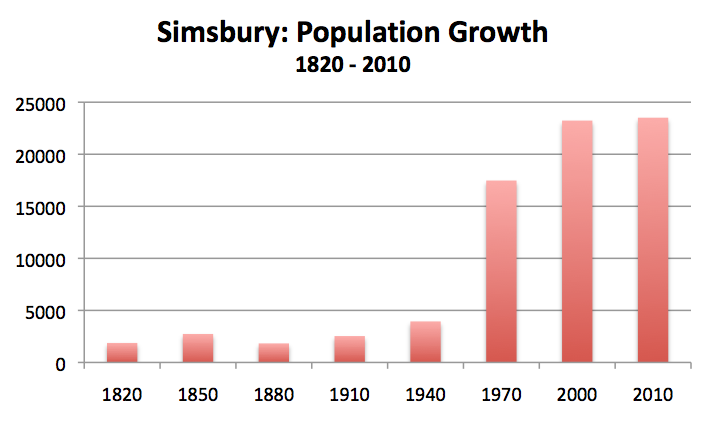
Who are its notable people?
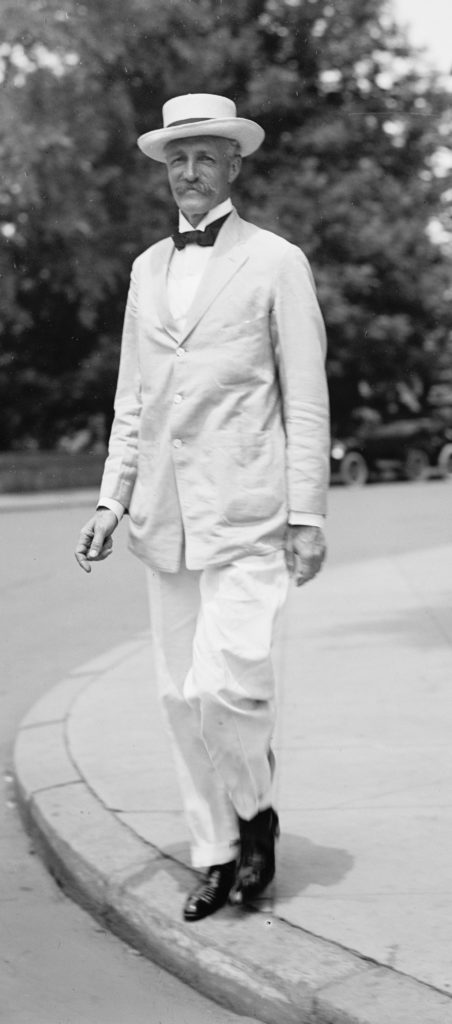
Gifford Pinchot, 1914. Library of Congress
Gifford Pinchot
Look around you. Is there a state park? A forest? Flowers and grass and other plants? They might not be here without Gifford Pinchot (pronounced pin-show). He was born in 1865 in Simsbury. He was born into a well-to-do family. He was able to travel to Europe. While in France, he learned about the idea of conserving, or taking care of, the forests. He returned to America wanting to put those ideas to use. He joined the U.S. Division of Forestry in 1898. It managed the forests owned by the U.S. Government. It was renamed the United States Forest Service in 1905. Pinchot was named its first director. Due to scandals, he was fired in 1910. He was governor of Pennsylvania from 1922 to 1926 and 1930 to1934. As governor, he helped the poor and hired more African-Americans, women, and Jews for government jobs. He died in 1946 in New York City.
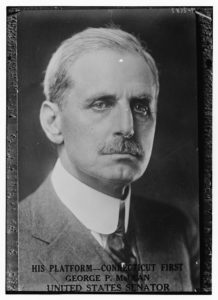
Senator George P. McLean. Library of Congress
George McLean
George McLean was born in Simsbury in 1857. He was elected to the Connecticut House of Representatives and the state Senate. He was Governor of Connecticut from 1901 to 1903. He served as a United States Senator for three terms (1911 to 1929). As a senator he had his greatest achievement. In 1918, he helped pass the Migratory Bird Act. That law protected birds in danger. He loved nature so much that in 1932, he created the McLean Game Refuge. The refuge has 4,200 acres where animals are protected from harm. McLean died in 1932, but his legacy is alive today at the McLean Game Refuge in Simsbury and Granby.
Read more about the McLean Game Refuge HERE.
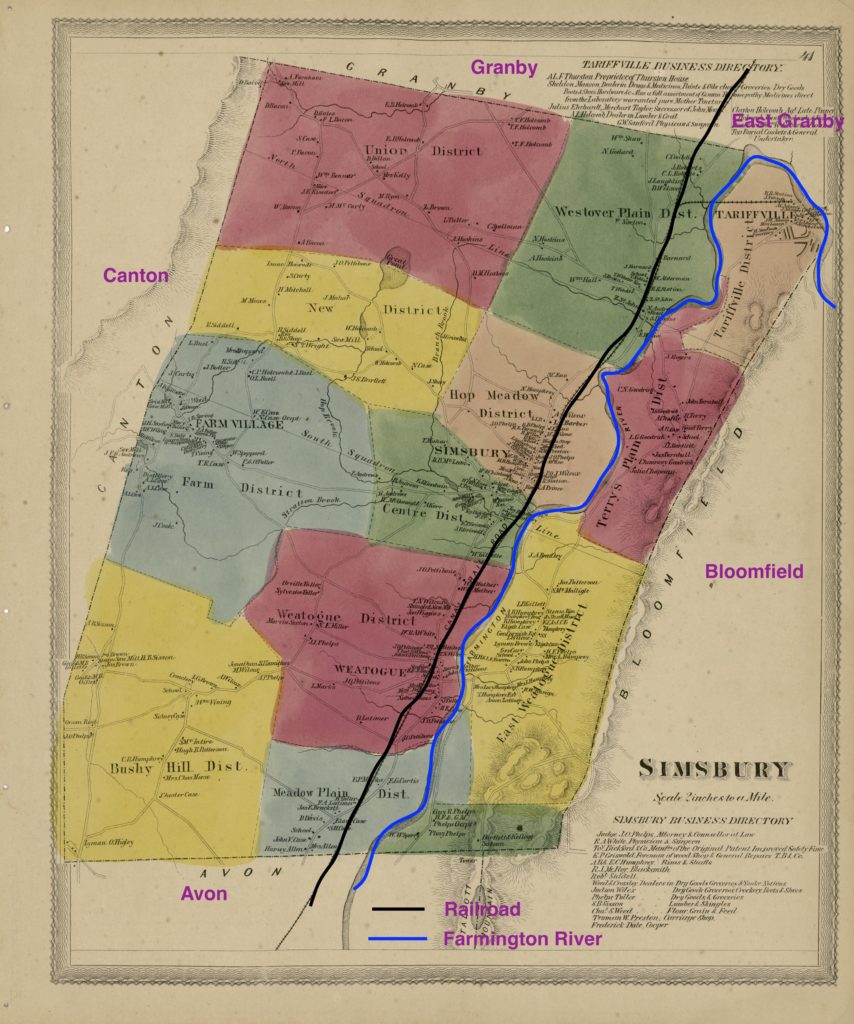
Simsbury in 1869. Library of Congress
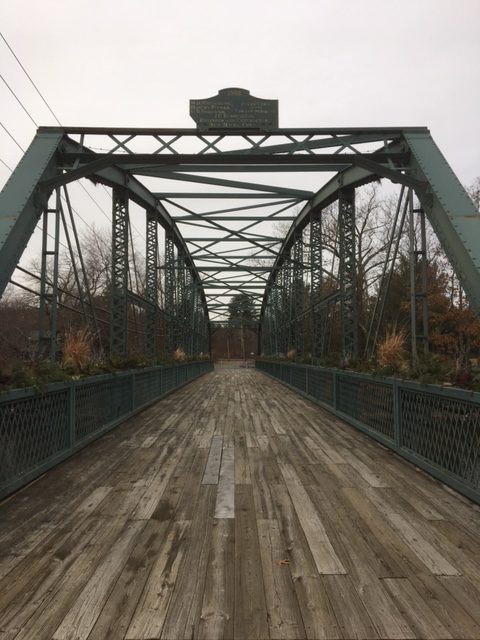
The Old Drake Hill Flower Bridge is a metal-truss bridge built in 1892. It is 183 feet long and spans the Farmington River. It is now only used by walkers and bike riders. It was listed on the National Register of Historic Places in 1984. Read more about it here: https://www.simsbury-ct.gov/culture-parks-recreation/pages/the-old-drake-hill-flower-bridge. Photo: Bobby Shipman
Sources:
Simsbury Historical Society website
Noah Amherts Phelps, History of Simsbury, Granby, and Canton; from 1642 To 1845 (Case, Tiffany, & Burnham, 1845)
Mary Jane Springman and Alan Lahue, Simsbury (Arcadia Publishing, 2011)



 Simsbury is in the north-central part of the state. It is bordered by Granby on the north, Canton on the west, Avon to the south, and East Granby and Bloomfield to the east. Until 1786 Simsbury included Canton, Granby, East Granby, and a part of Bloomfield.
Simsbury is in the north-central part of the state. It is bordered by Granby on the north, Canton on the west, Avon to the south, and East Granby and Bloomfield to the east. Until 1786 Simsbury included Canton, Granby, East Granby, and a part of Bloomfield. The largest tree in Connecticut grows in Simsbury. It is a Sycamore tree. It grows near the Farmington River.
The largest tree in Connecticut grows in Simsbury. It is a Sycamore tree. It grows near the Farmington River.




 In 1669, there were only 21 residents. But the population grew. The opportunities for hunting, fishing, and agriculture attracted many settlers after King Philip’s War ended.
In 1669, there were only 21 residents. But the population grew. The opportunities for hunting, fishing, and agriculture attracted many settlers after King Philip’s War ended.



